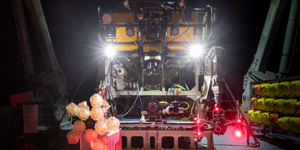Researchers now use a suite of advanced technologies to study deep-sea animal movements, enabling unprecedented insight into these elusive environments:

- Remotely Operated Vehicles (ROVs) and Autonomous Underwater Vehicles (AUVs): These robotic platforms can independently explore deep waters, track animal movements, and collect high-resolution imagery and samples without disturbing fragile organisms.
- High-Resolution 3D Imaging: Instruments like the Deep Particle Imaging Velocimetry (DeepPIV) and the EyeRIS plenoptic camera mounted on ROVs allow scientists to capture detailed three-dimensional images and videos of deep-sea animals in their natural habitats, revealing both their structure and movement.
- Genomic Sequencing and In Situ Tissue Sampling: New robotic samplers, such as the RAD-2 system, can quickly collect and preserve tissue samples from delicate animals, enabling rapid genetic analysis and even the creation of digital “cybertypes”—comprehensive digital records of individual specimens.
- Acoustic and Telemetry Tags: Innovations in telemetry, including acoustic transmitters and satellite tags, have made it possible to track the movements of deep-sea species over large distances and depths, providing data on migration patterns and habitat use.
- Environmental Sample Processors (ESPs): These devices can analyze water samples in situ for genetic material and chemical properties, helping detect the presence and activity of various organisms without direct observation.
- Advanced Underwater Cameras: The latest 4K and light-field cameras mounted on underwater vehicles provide ultra-high-definition footage and allow for detailed behavioral studies of deep-sea fauna.

These technological advances have dramatically accelerated the pace of discovery, allowing scientists to observe, document, and understand deep-sea animal movements and behaviors with a level of detail that was previously impossible.




